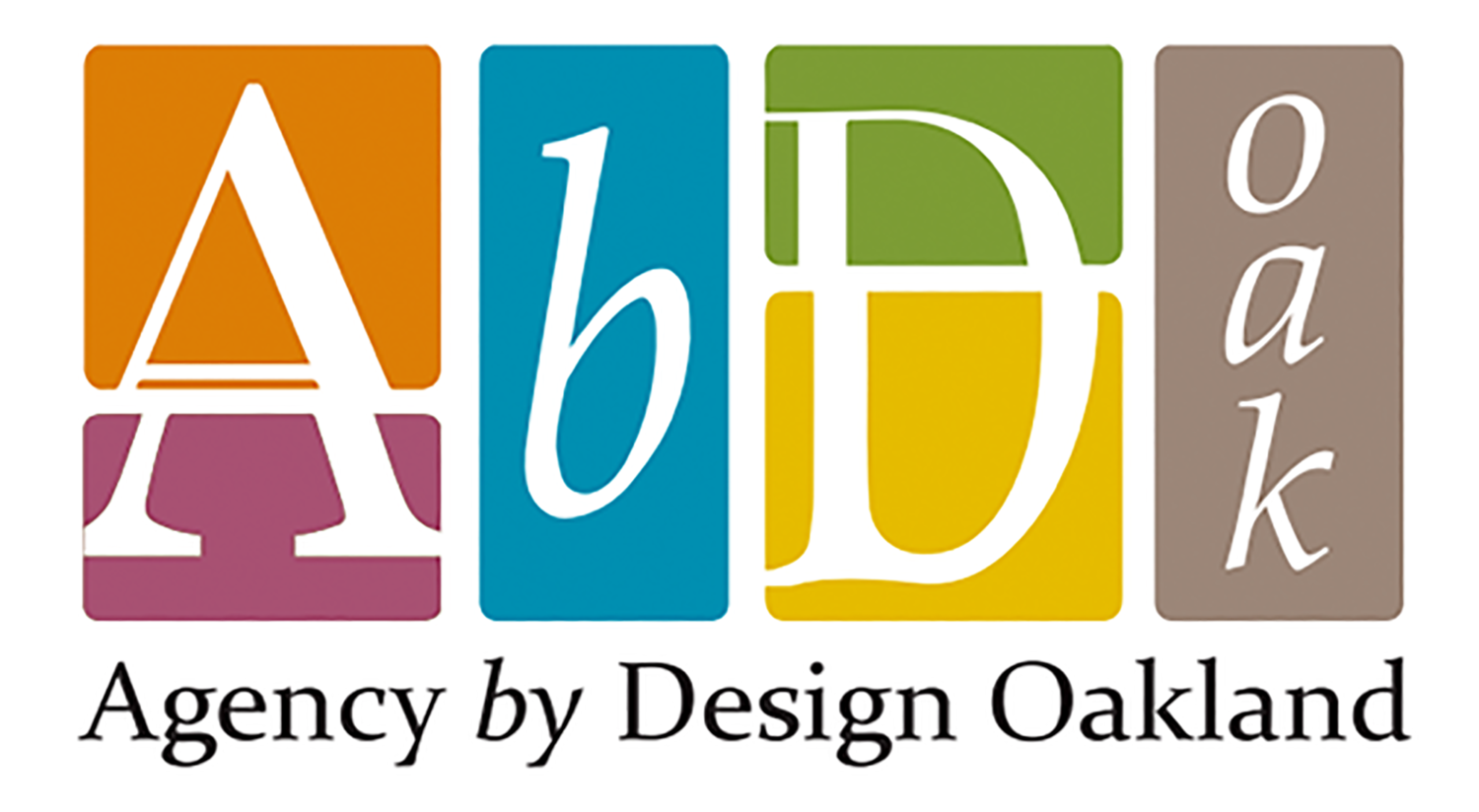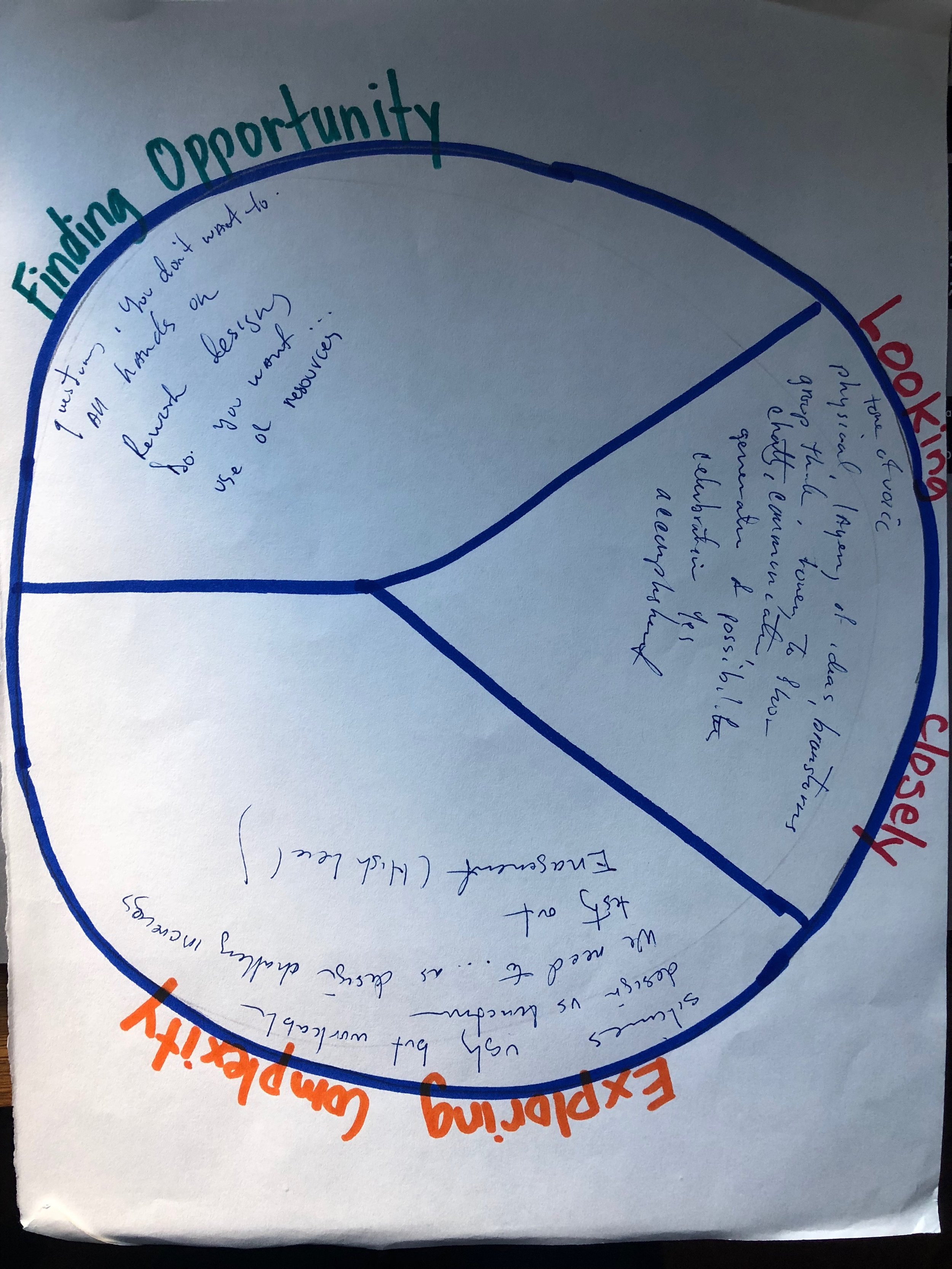“I used to think maker-centered learning was doing projects. Now I think maker-centered learning is a way of thinking.”
2018 - 2019 Teacher Fellow, Agency by Design Oakland
Sometimes it’s hard to tell what exactly our learners are thinking, and what that thinking shows about their understanding, or how they are making sense of the world. By using thinking routines with our learners they can make their ideas and understanding visible to themselves, to each other, and to the teacher.
The ultimate goal of maker-centered learning is to develop maker empowerment—an “I can do that!” or “I can figure that out” mindset. Researchers at Project Zero, at the Harvard Graduate School of Education, tells us that one of the main ingredients in maker empowerment is having a sensitivity to the design of objects and systems in the world. But, how do we teach that? Luckily, the researchers break it down even further into the capacities supporting maker empowerment, which are looking closely, finding opportunity, and exploring complexity. And, specific thinking routines have been developed in order to support the development of each of these capacities.
In Culturally Responsive Teaching & the Brain, Writer, Educator, and Literacy Advocate Zaretta Hammond writes, “Building a culture of care that helps dependent learners move toward independence requires what I call a learning partnership.” Practicing these thinking routines with our learning community, anchored within and across content areas, empowers both teacher and student enter a learning partnership — to think deeply from a variety of perspectives, develop their curiosities, empathy, and understanding of not only systems, but also the different layers within that as well. “Think of it as an equation:” Hammond writes, “rapport + alliance = cognitive insight.” By using these thinking routines routinely, educators support learners in a culture of thinking, establishing a rapport and an alliance in their learning partnerships that lead to cognitive insights.
“Cognitive routines are social justice,” Hammond said after she attended Agency by Design Oakland fellow Tim Bremner’s workshop “How are cognitive thinking routines a tool for culturally responsive teaching?”
In this post, you will learn about the five Agency by Design thinking routines and see examples of how they’re being used by Oakland teacher fellows, in both STEAM and Humanities classes. These thinking routines can be used in a variety of contexts and throughout many different grade levels. The more exposure and practice that students have with each routine, the more they deepen their sensitivity to design and their capacity to think critically.
This powerful thinking routine can be used to not only explore the complexities of systems, but also peoples’ different lived experiences. We have seen it develop empathy in learning communities, considering multiple perspectives when analyzing systems or events. In this thinking routine, learners are asked to consider the different point of views of various people within a system, or within a single event - such as in a novel study, or the study of an overarching system.
This thinking routine is fundamental in developing not only a sensitivity to the design of objects, but also harnessing a person’s natural curiosities about the how and why of a creation. It allows learners to consider objects not only in their entirety, but also their parts and their purposes. We have seen learners use this routine with physical objects (pens, pencils, old computers, tacos) and even less physical objects such as websites or apps. It is a great way to introduce learners to a tool they may start to use (a screwdriver, or textbook) or something they might start to make or build (a kite, a website). Exploring the complexities and purposes activates the questions of how and why something is built the way it is, and helps empower makers to consider their own designs and creations more from both a micro- and macro-perspective.
In this thinking routine, learners are asked to not only consider, or step inside, a system, but to look closely at one perspective within that system, and then consider their own role. A melding of Think, Feel, Care and Parts, Purposes and Complexities, this thinking routine supports a close study of macro-systems and micro-experiences. Zooming in and out of systems, perspectives and themselves, learners can explore the complexities and the effects of the various systems in this world.
Similarly to the aforementioned thinking routines, this one helps to support looking closely and exploring complexity. Learners are again asked to step inside a system, and consider the parts of that system, the people involved in the system, and their interactions amongst each other. Living in an individualistic society can often times stifle us into only considering our own perspectives and zoom in on how we, as individuals, are impacted by a system. This thinking routine helps to expand learners’ minds to see that there are many actors within systems, some who have conflicting interests, some who benefit, and some who don’t. Like the Think, Feel, Care routine, this can be a powerful way to develop empathy towards different perspectives and experiences.
Last, but by no means the least, is a fun and playful thinking routine that supports the capacity of finding opportunity. During this thinking routine, learners are asked to consider the design of objects or systems and to re-design them (through imagining) to be more effective, efficient, ethical and beautiful. It is open-ended by design, so that learners feel and experience the possibilities of their wildest imaginations. Learners are not just bystanders to systems, but empowered to be creators themselves, imagining how they would shift and design the objects and systems in their worlds.












































